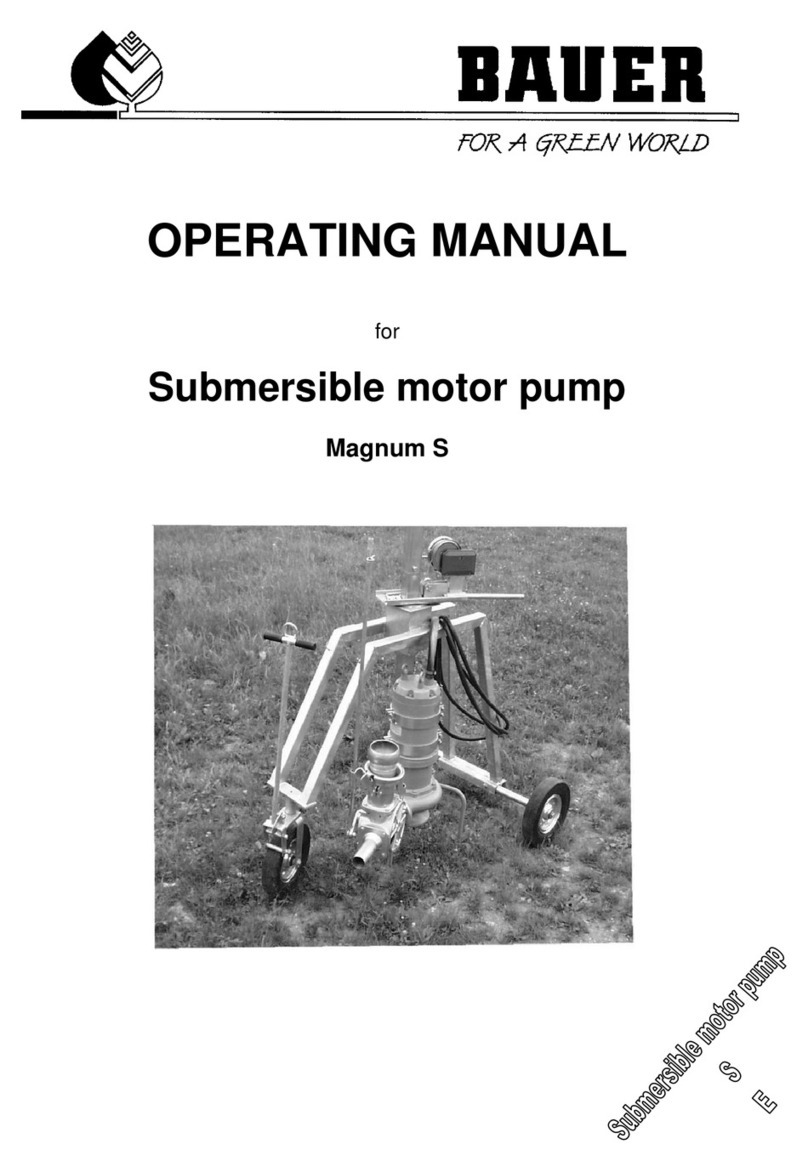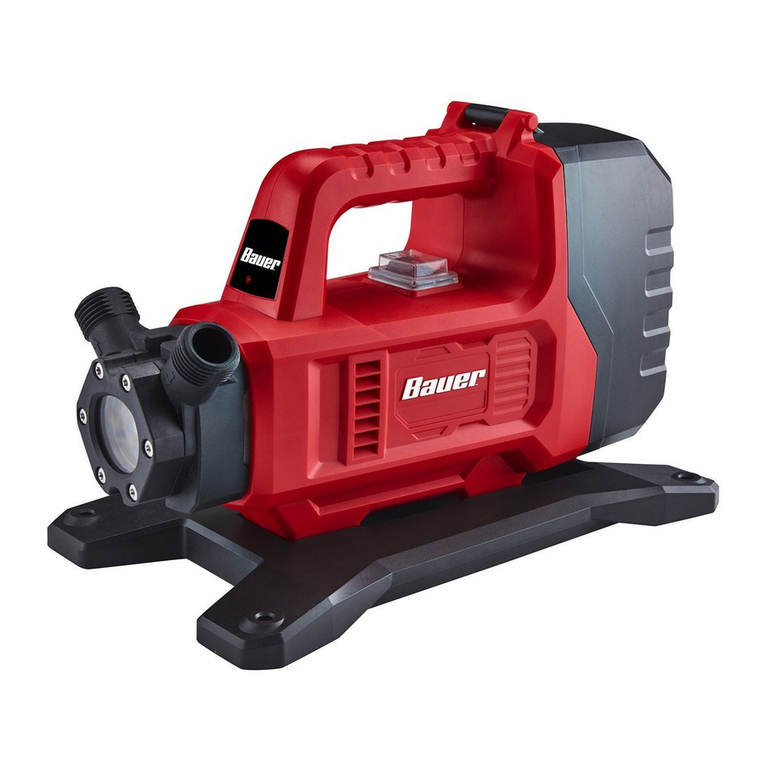
2Operating manual for BAUER gear pump
1 GENERAL INSTRUCTIONS FOR SAFETY AND ACCIDENT
PREVENTION
Check the machine for operational safety before every start-up.
1. In addition to the instructions contained in this manual, all specifications generally valid for safety and
accident prevention must be observed!
2. The warning and instruction signs affixed to the machine give very important instructions for safe operation.
Observing them serves your own personal safety!
3. Never put the machine into operation unless all guards and safety devices are completely mounted and in
their proper working position!
4. Acquaint yourself with all equipment components and controls as well as their respective functions before
starting to work. It is too late when the device is already running!
5. The operator’s clothes should fit tightly. Avoid wearing loose clothes!
6. When handling slurry always keep in mind that the gasses produced are highly toxic and extremely explosive
in combination with oxygen. Therefore, open fires, light tests, sparking and smoking are strictly forbidden!
7. Utmost care is required with regard to gasses in slurry and dung channels at open valves to the preliminary
pit, before the main pit, or at cross channels. The same applies to mixing and withdrawal points when
mixers or pumps are running!
8. When handling slurry always ensure sufficient ventilation!
9. Keep the machine clean to avoid fire hazards!
Tractor-driven machines
1. Before starting inspect the area around the machine (Children) ! Make sure your view is unrestricted!
2. Riding on the machine during transport is forbidden!
3. Couple the machine according to instructions and fasten it only at the specified points!
4. Be especially careful when coupling the machine to the tractor or uncoupling it!
5. Always adjust the supports in the proper position when coupling or uncoupling the machine (stability)!
6. Always mount balancing weights properly at the points provided!
7. Observe restrictions pertaining to axle load, total weight, and transport dimensions!
8. Inspect and mount all items required for transport such as lighting, warning signals and possible safety
devices!
9. Mounted or trailed machines as well as balancing weights influence road behaviour, steering and braking
capacity. Therefore make sure that proper steering and braking are possible!
10.Consider the projection and/or centrifugal mass of the machine when driving in curves!
11.It is forbidden to stay in the working range of the machine while it is operating !
12.Keep out of the turning and swivelling range of the machine!
13.Only operate hinged hydraulic frames when nobody is in the swivel range!
14.Externally powered machines (e.g. hydraulic) bear a crushing and shearing hazard!
15.Nobody is allowed between the tractor and the implement unless the tractor is secured by the parking brake
and /or wedges under the wheels!
16.Hinged supports must always be folded up and secured before driving away!
17.Secure the machine and the tractor against rolling!
Tractor-mounted machines:
1. Before a machine is linked to or detached from the three-point linkage, the control device must be shifted to a
position in which unintentional lifting or lowering is impossible!
2. When using the three-point linkage the linkage parameters of both tractor and attached machine must
correspond, if not, they have to be matched accordingly!
3. The three-point linkage bears crushing and shearing hazards!
4. When operating the external control of the three-point linkage never step in-between tractor and the machine!
5. When the machine is in the transport position always make sure that the tractor’s links are always properly
secured on the sides.
6. When driving on the road with the machine lifted the control lever must be locked against lowering!
Trailed machines
1. When a machine is coupled to the drawbar make sure that the coupling point provides sufficient flexibility!






























